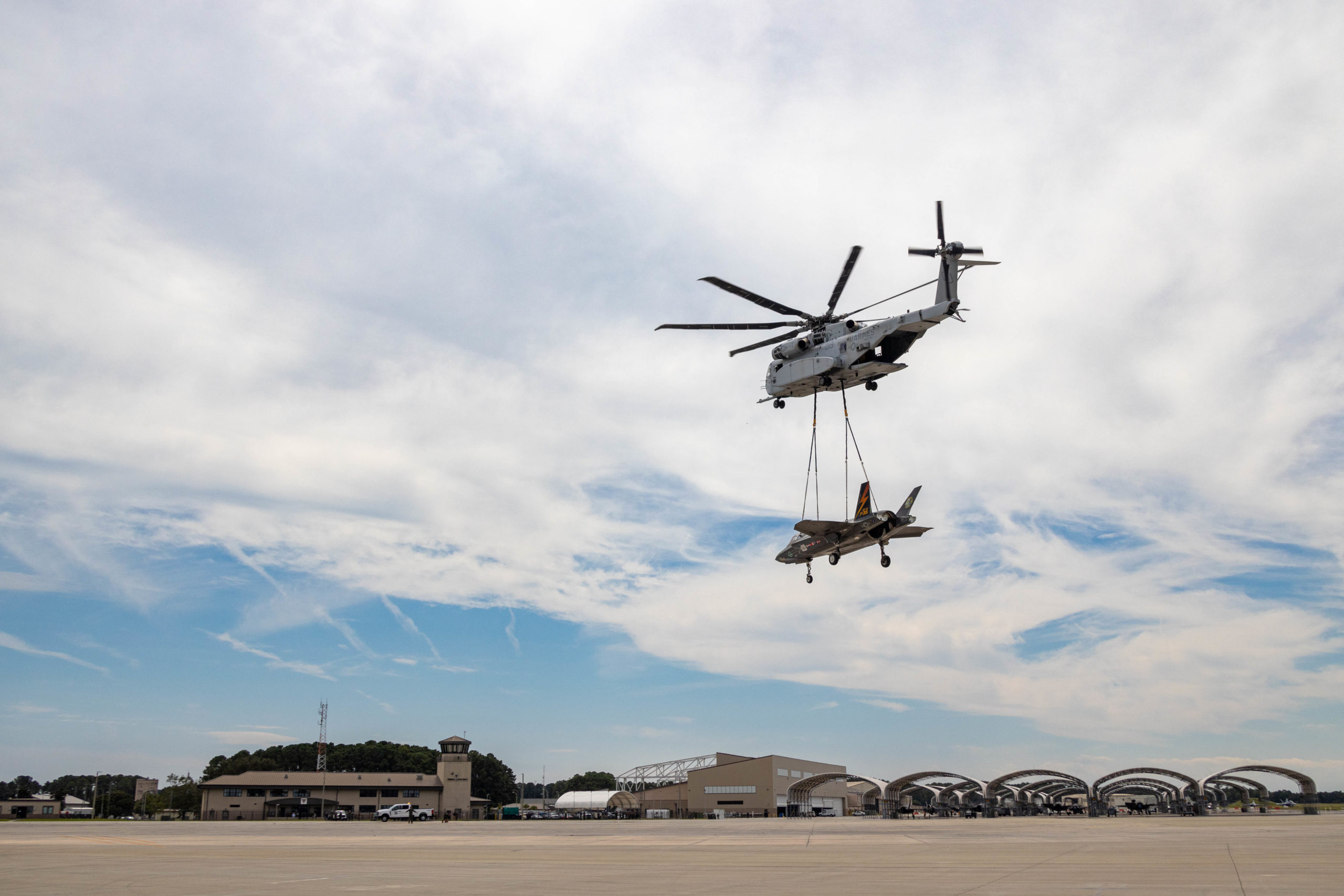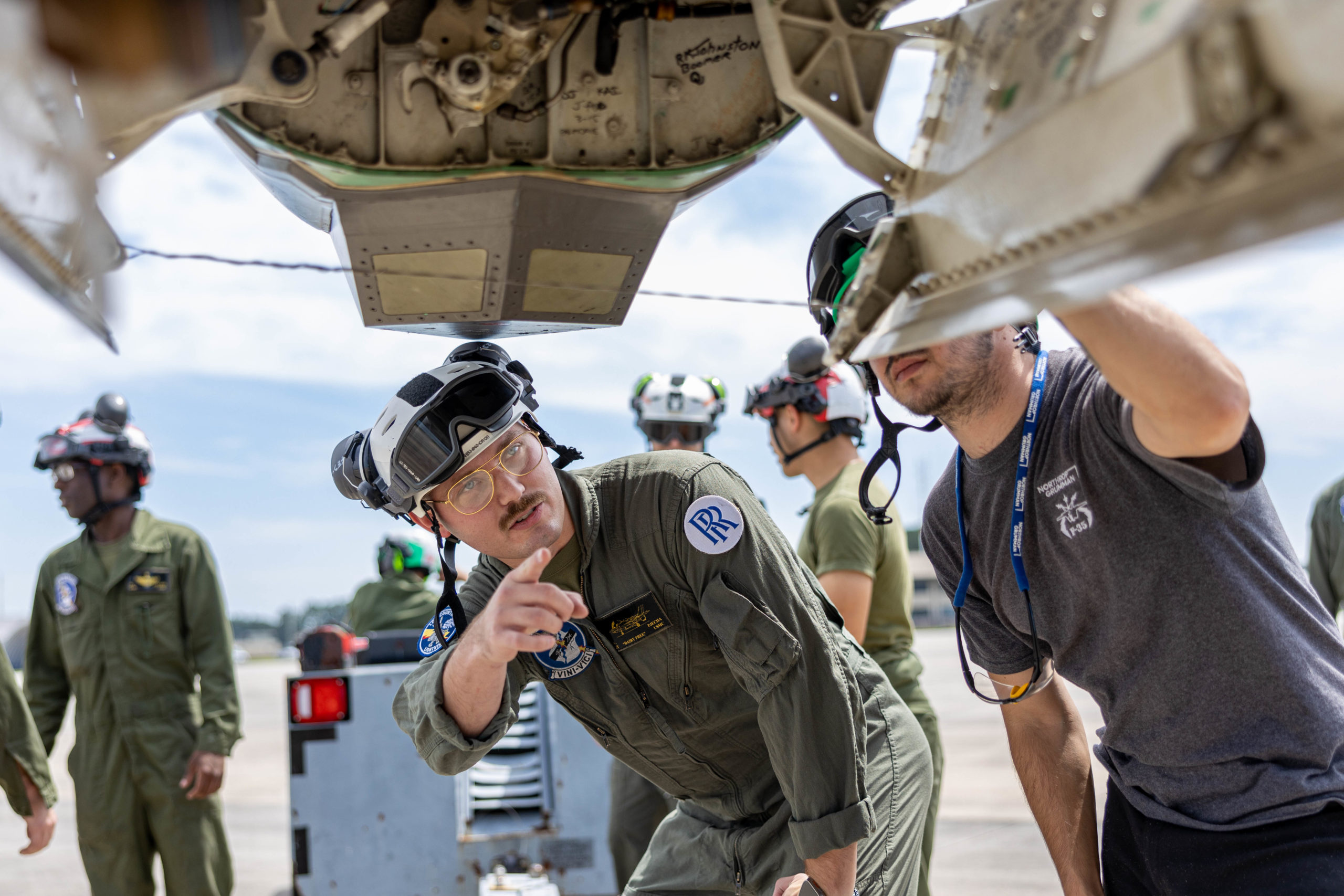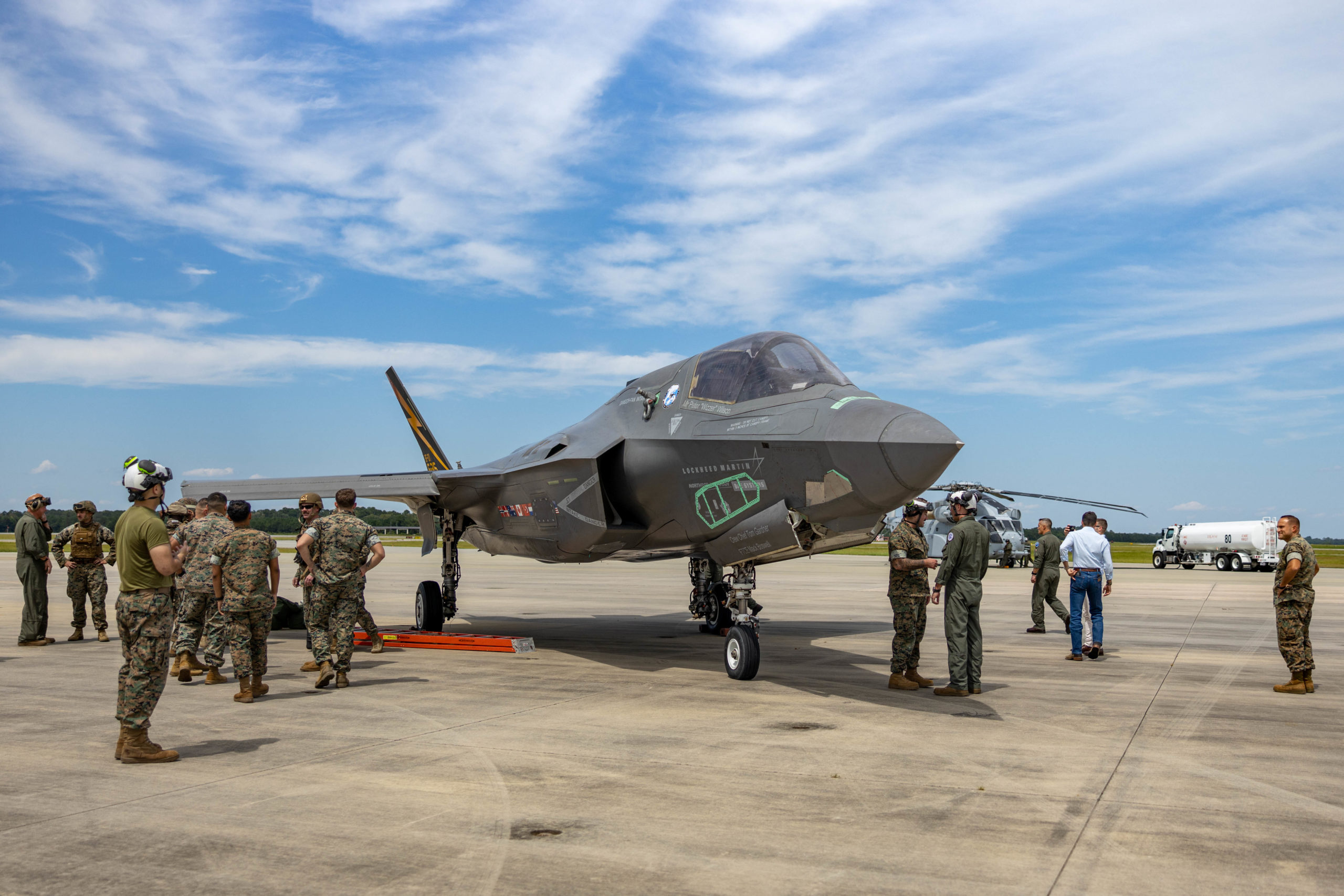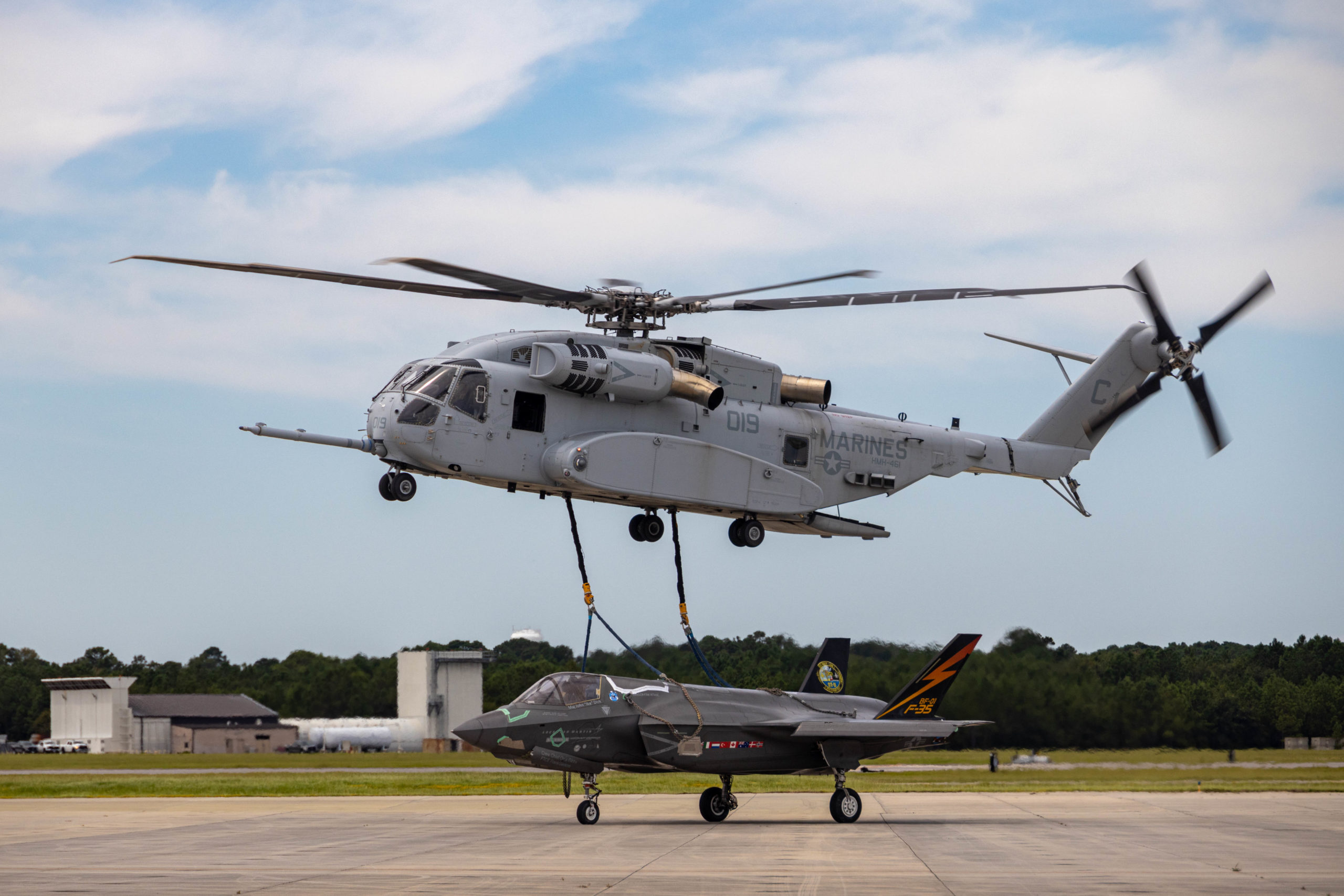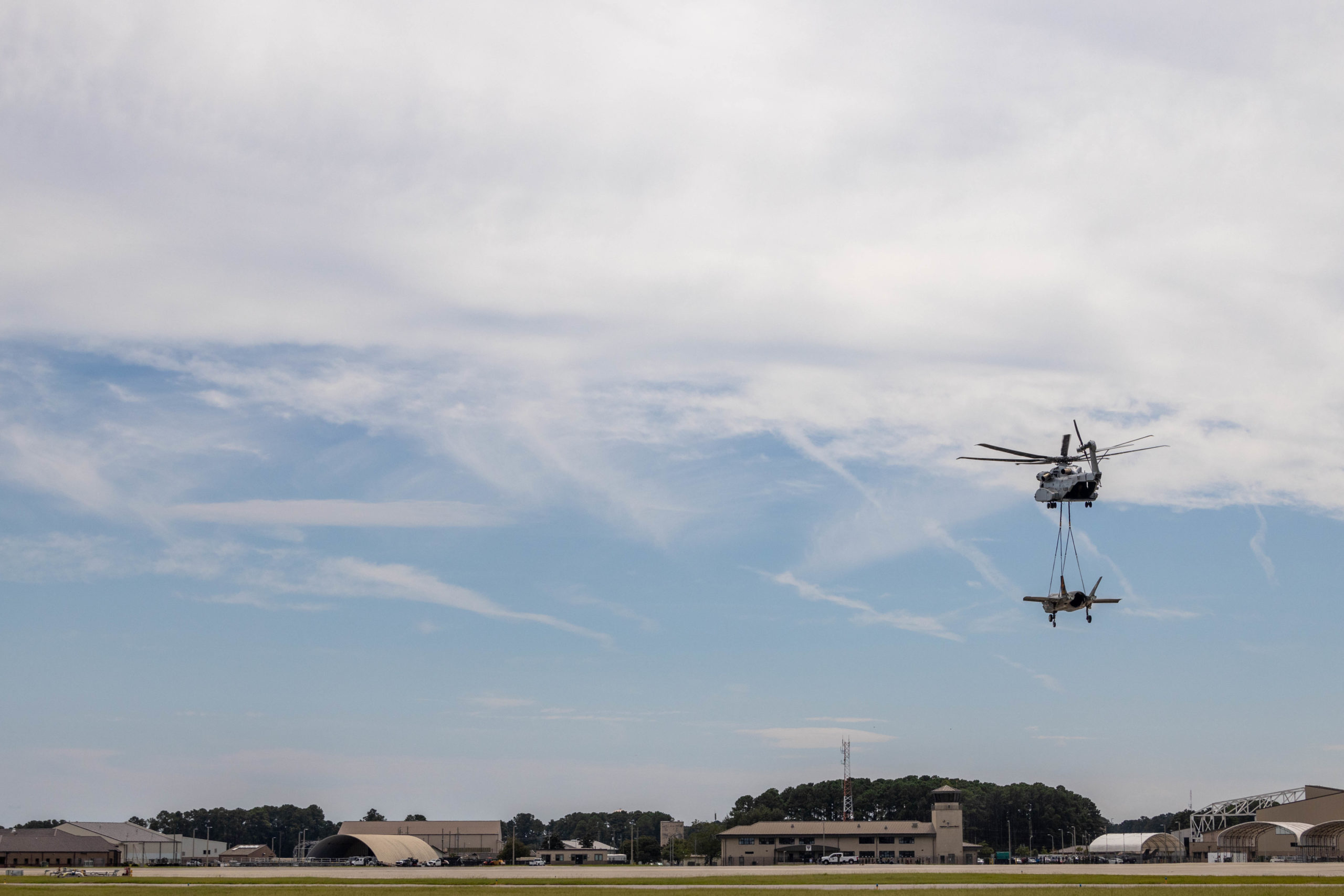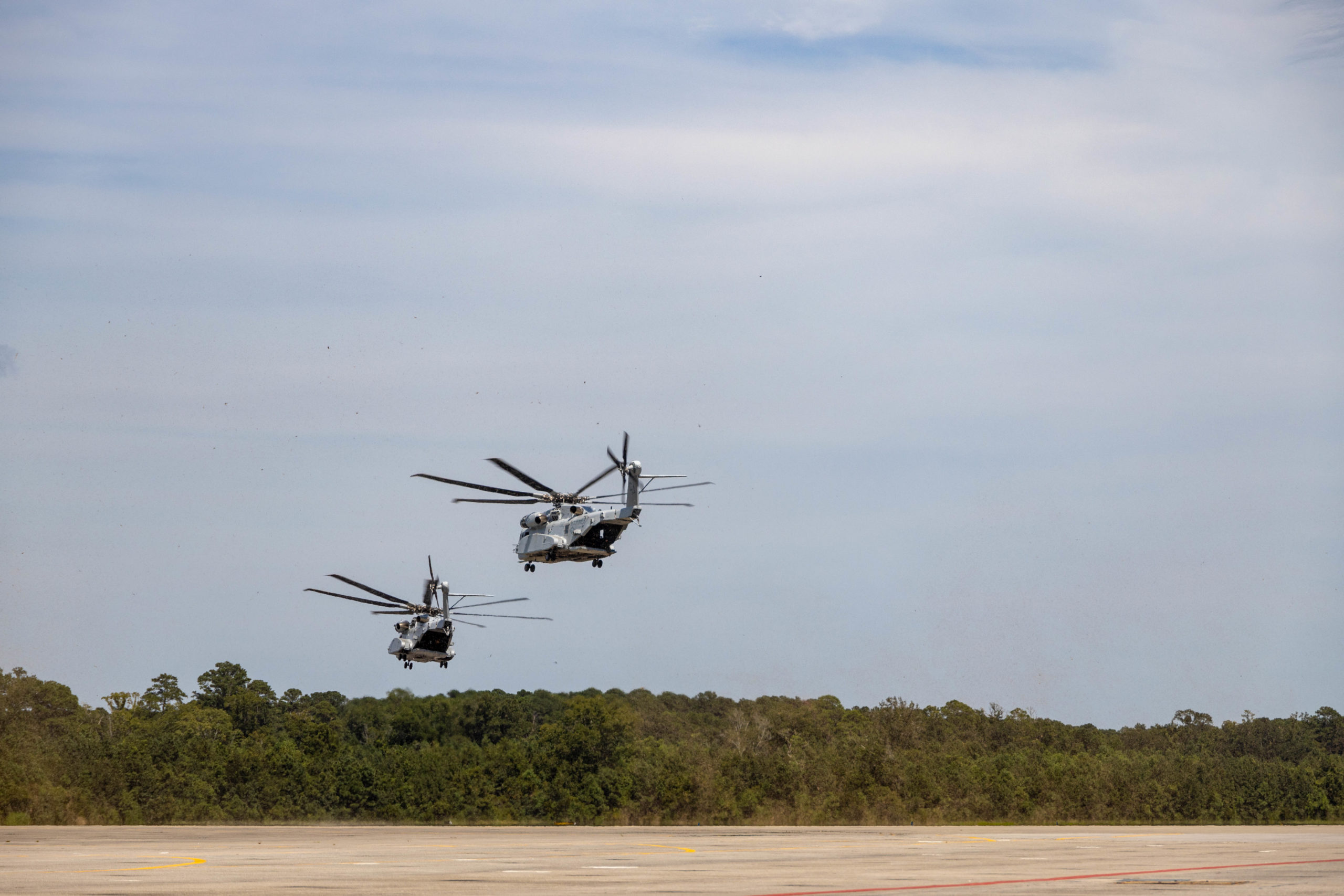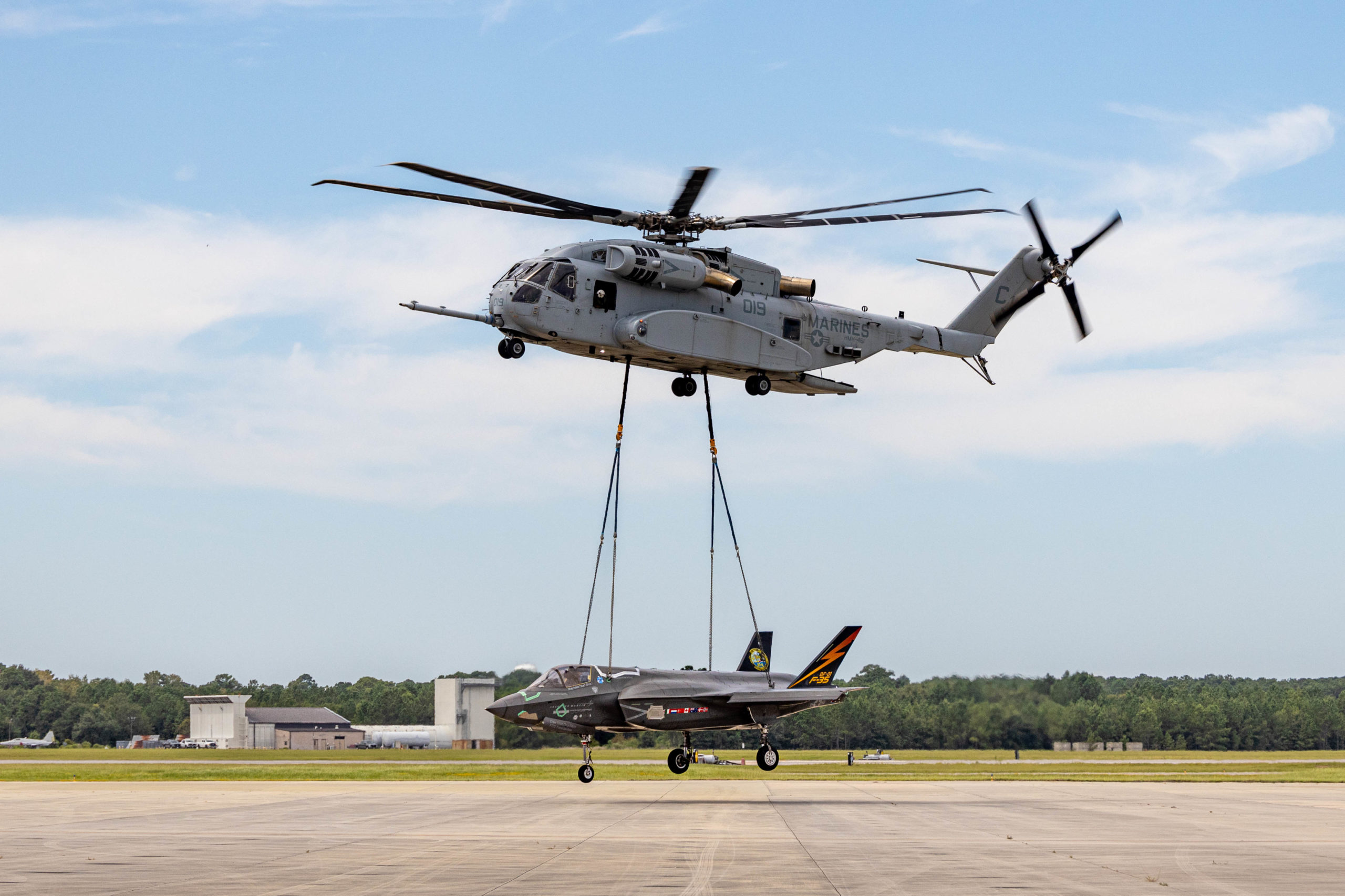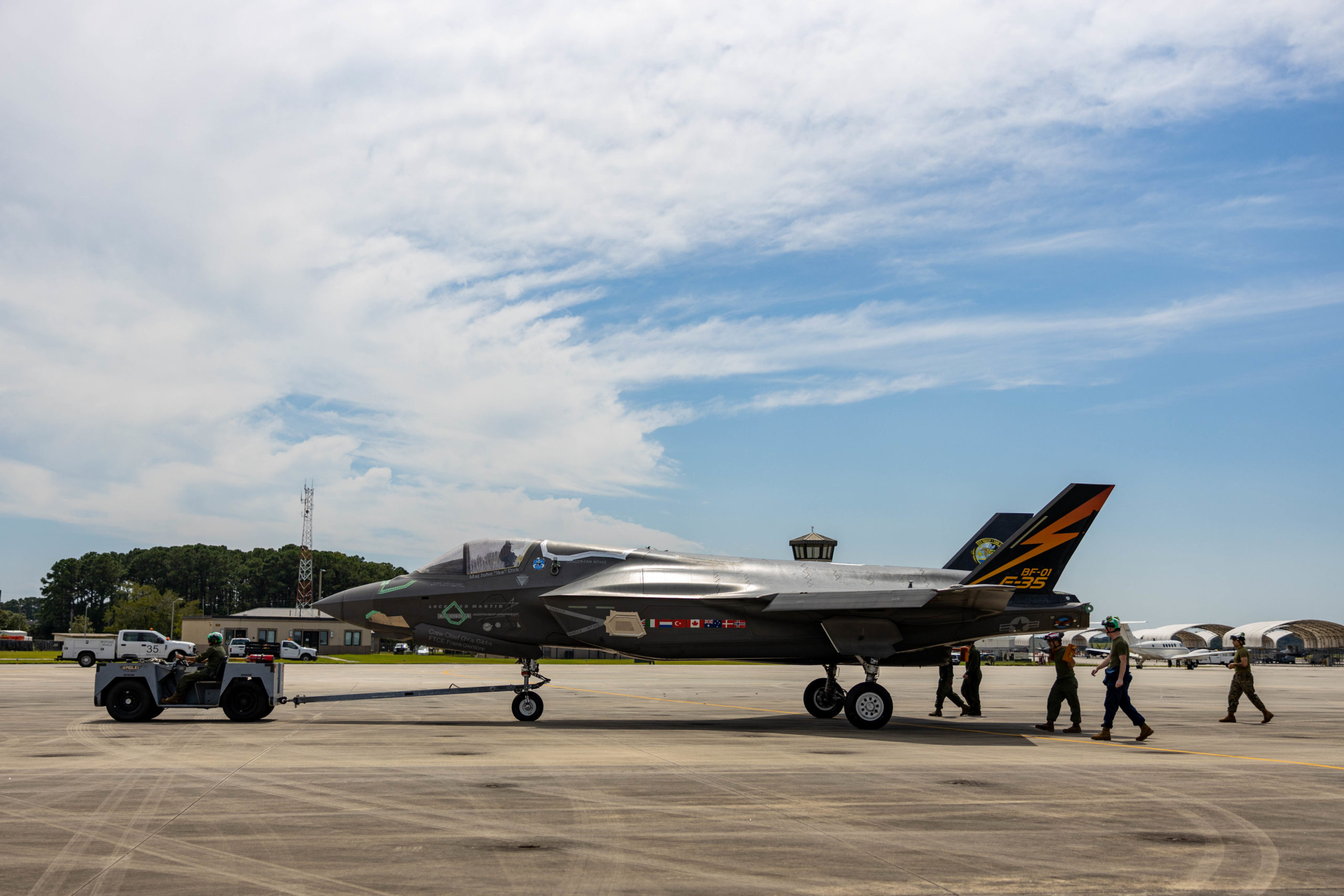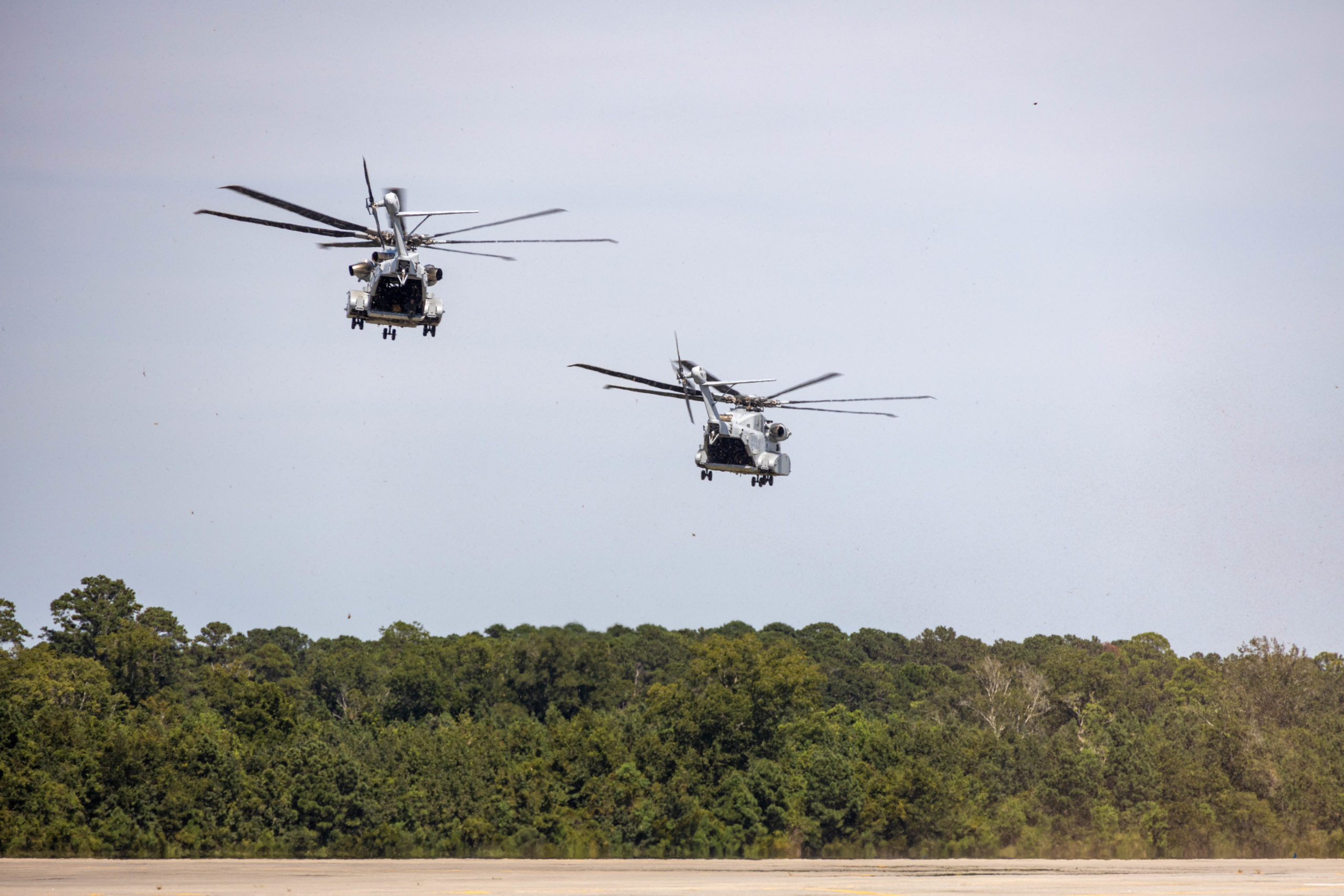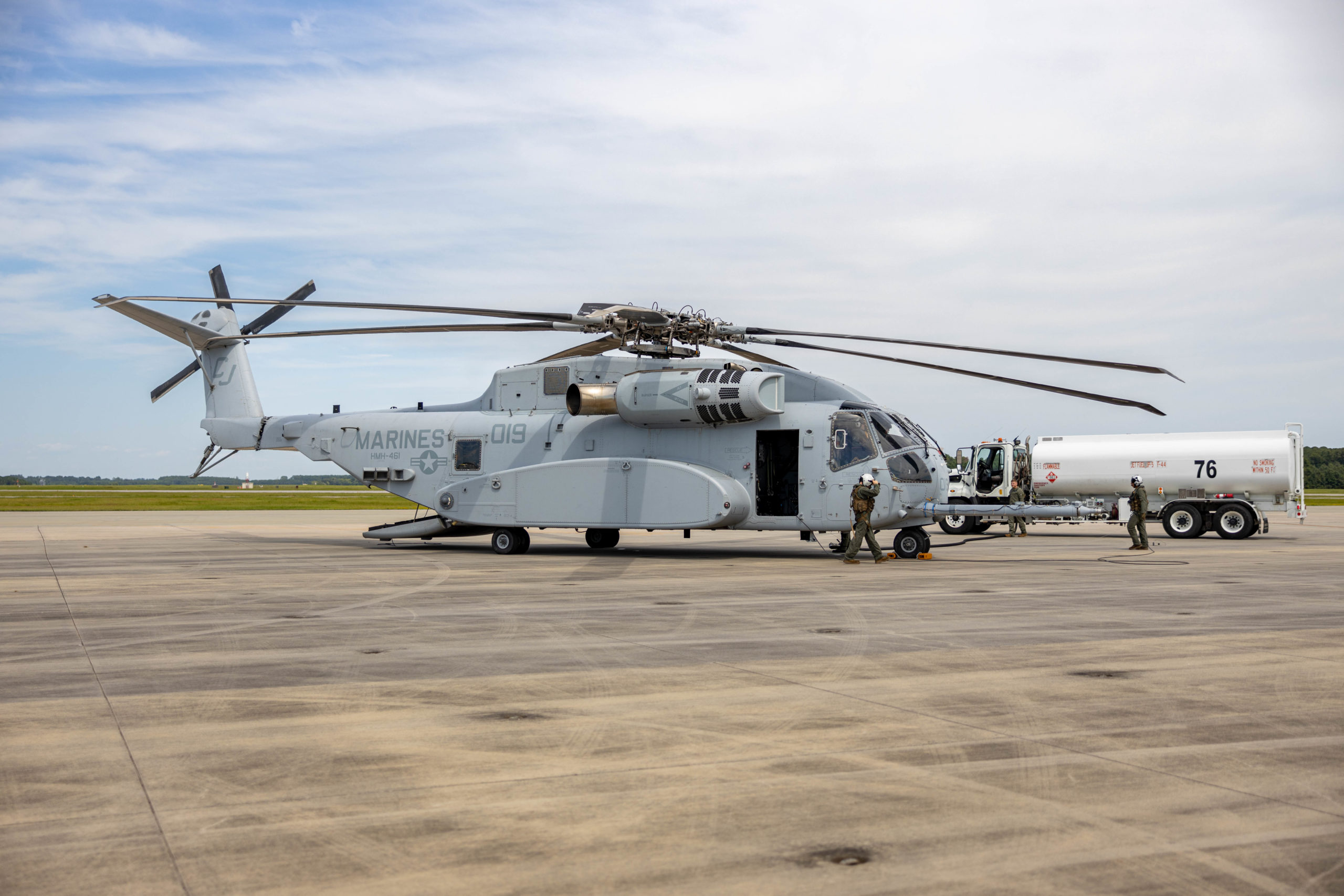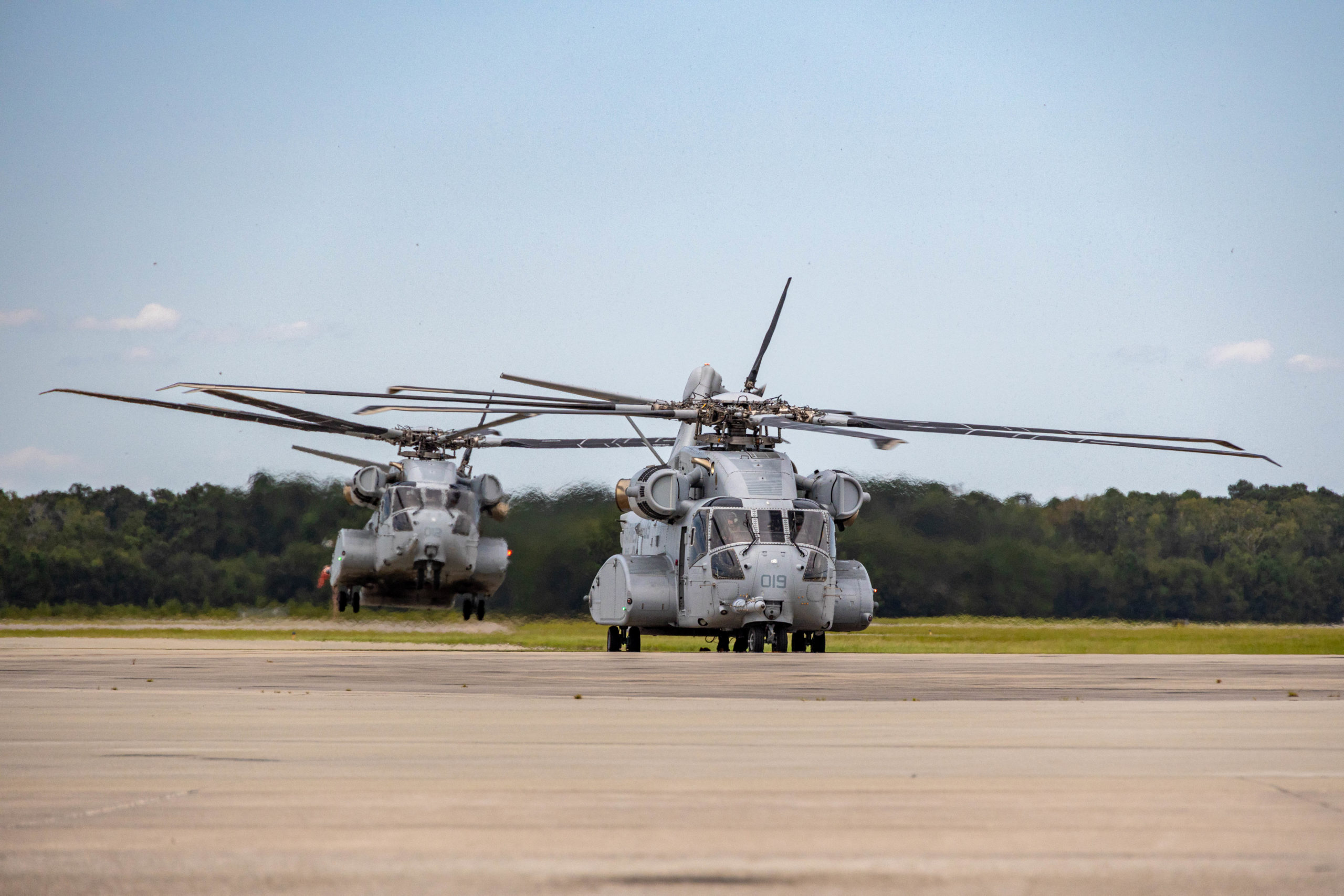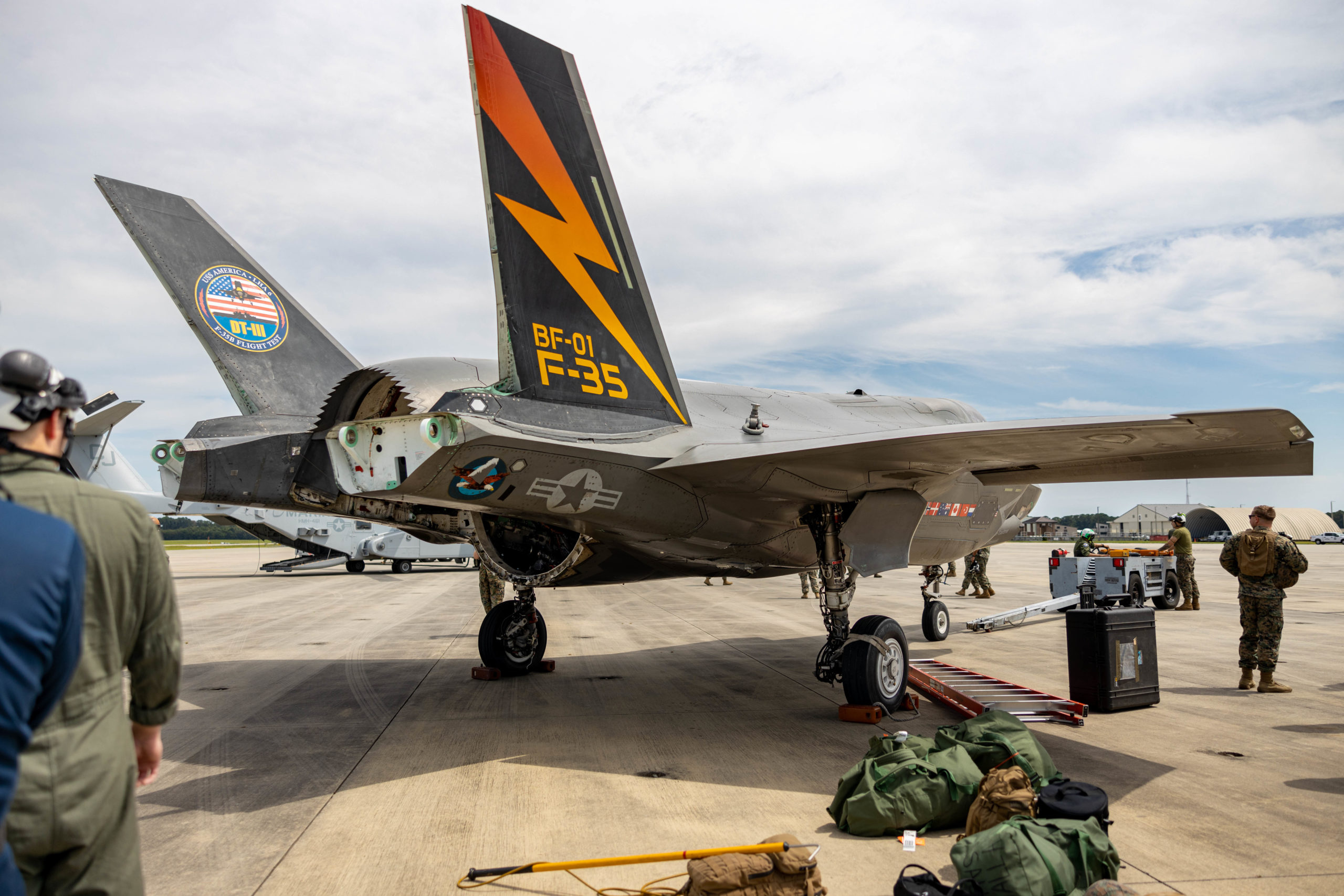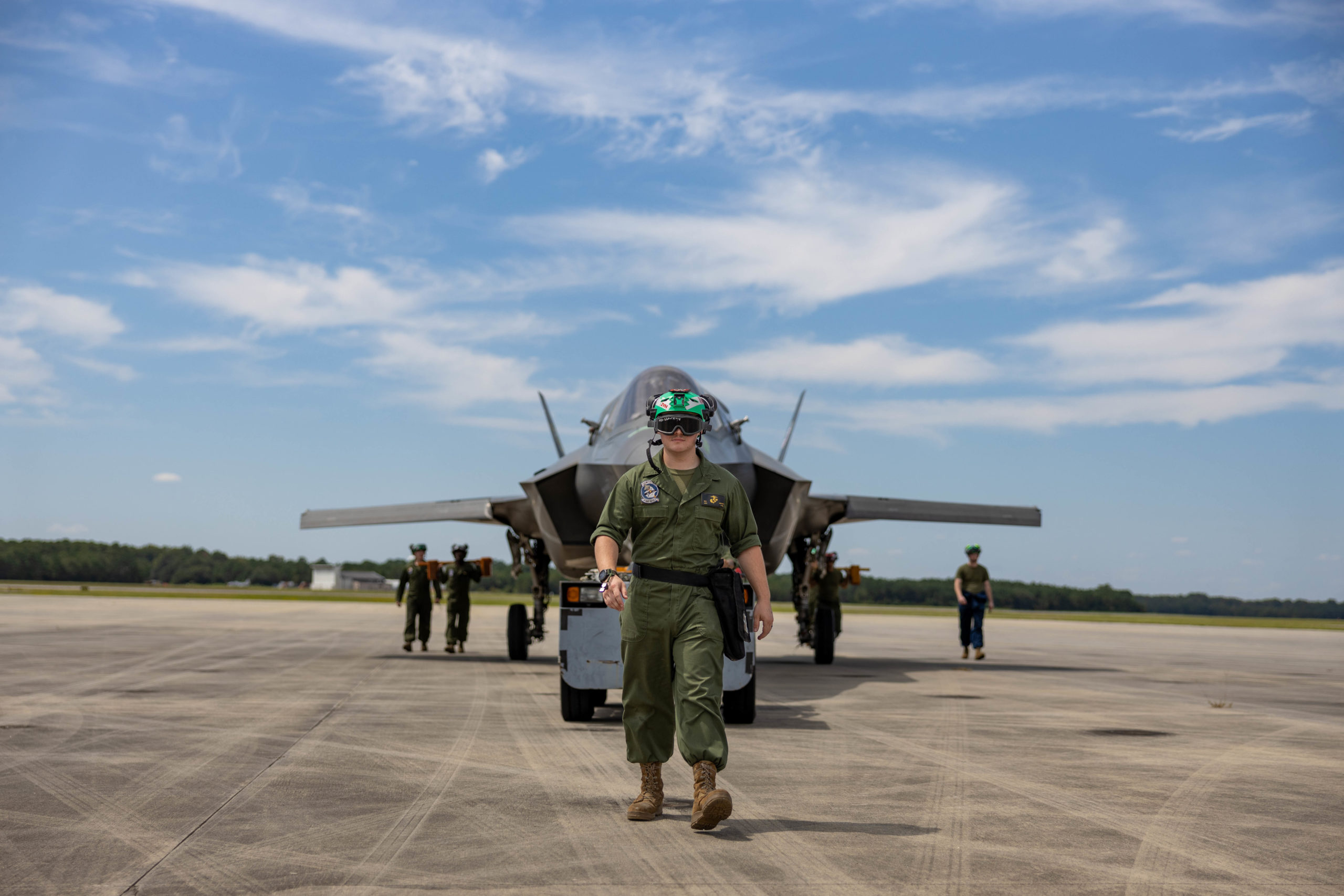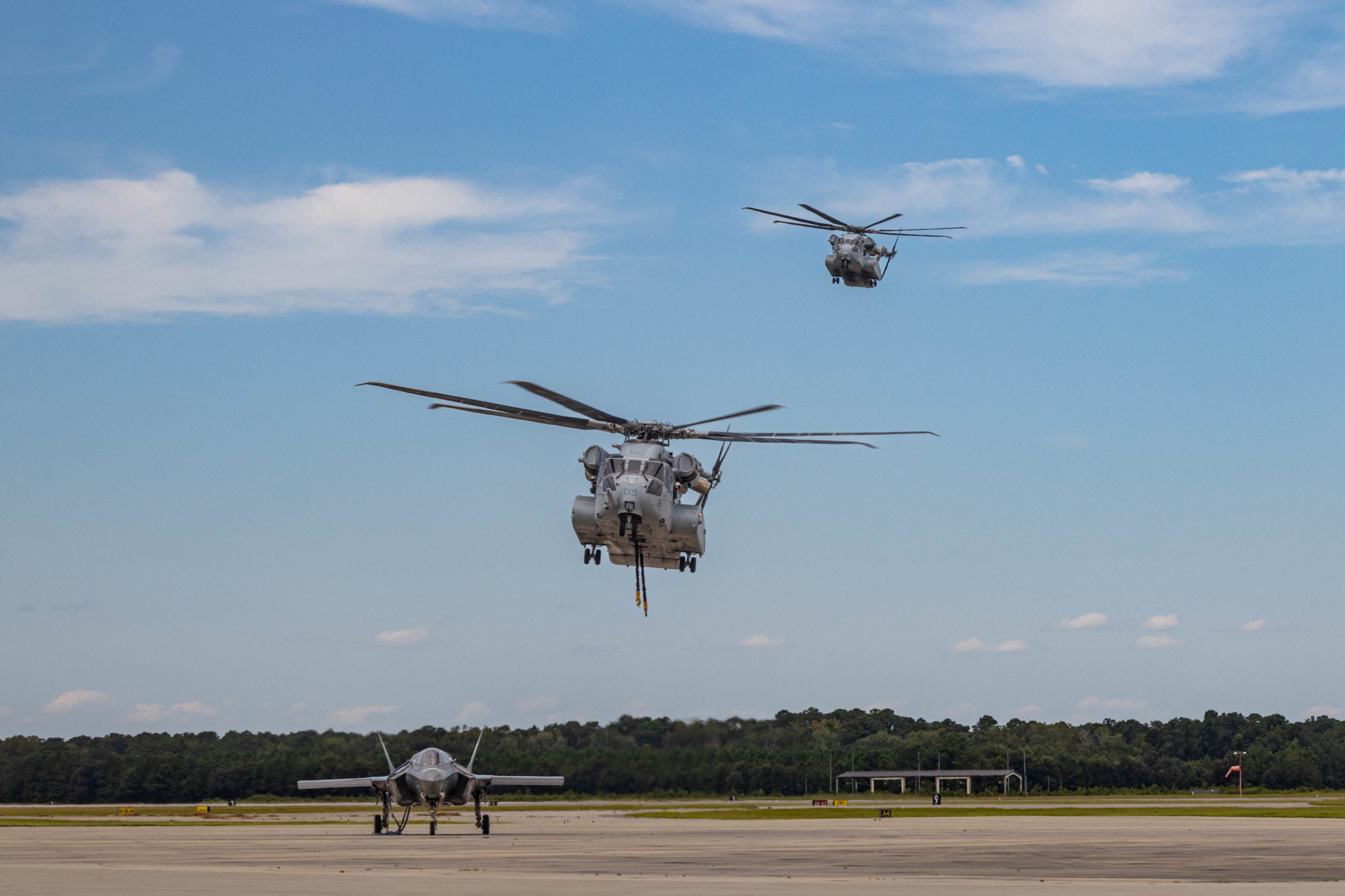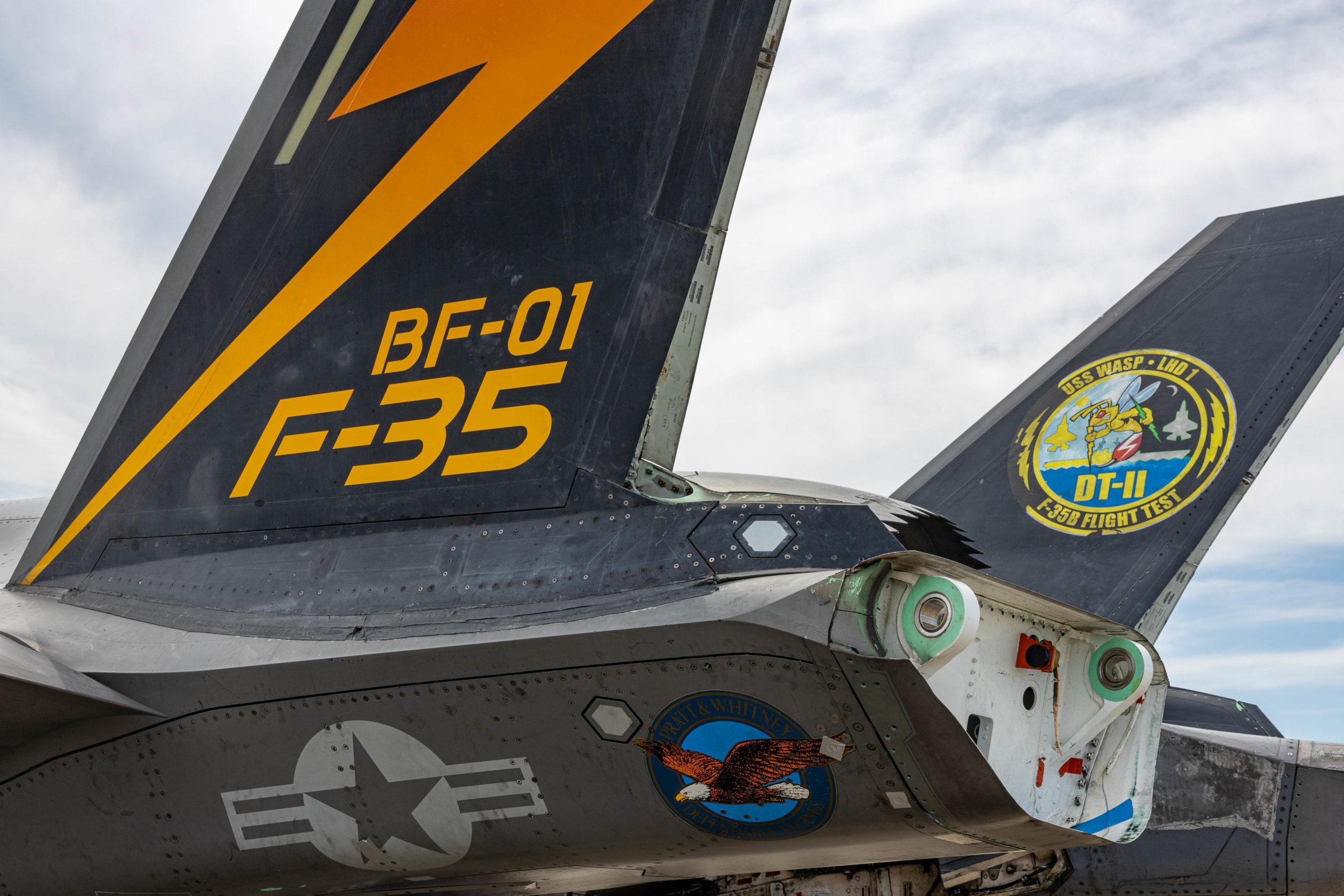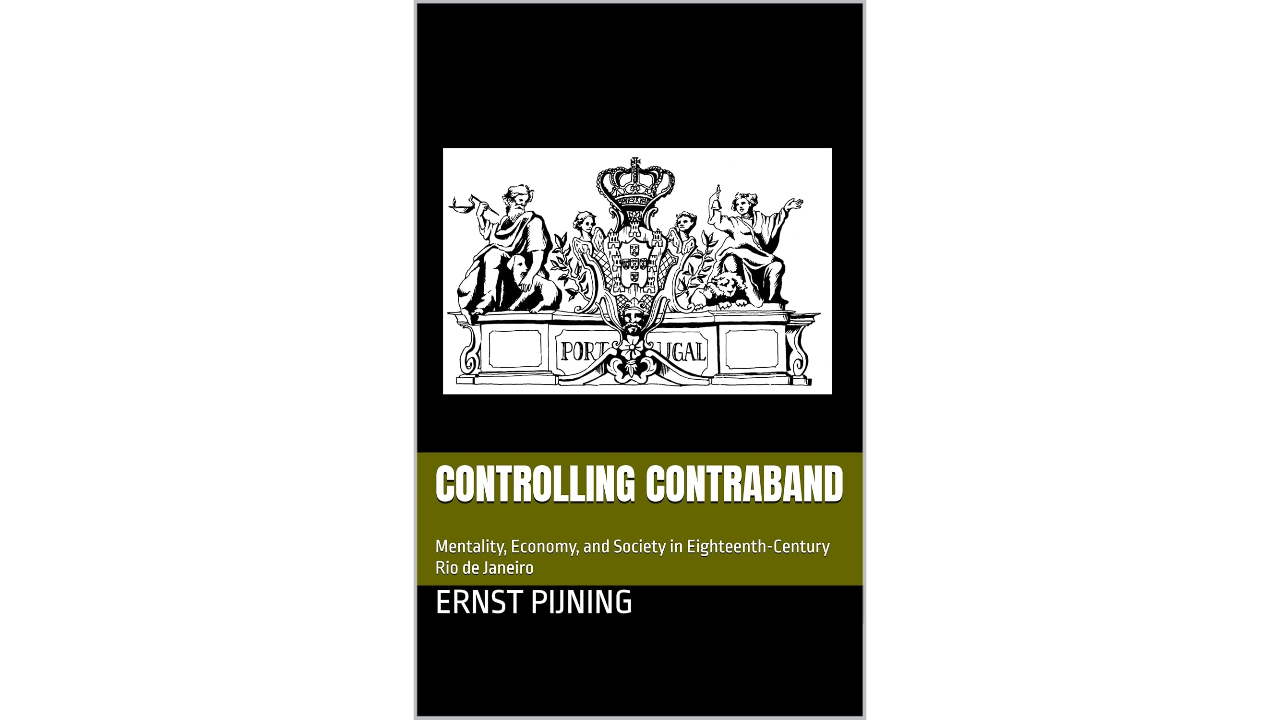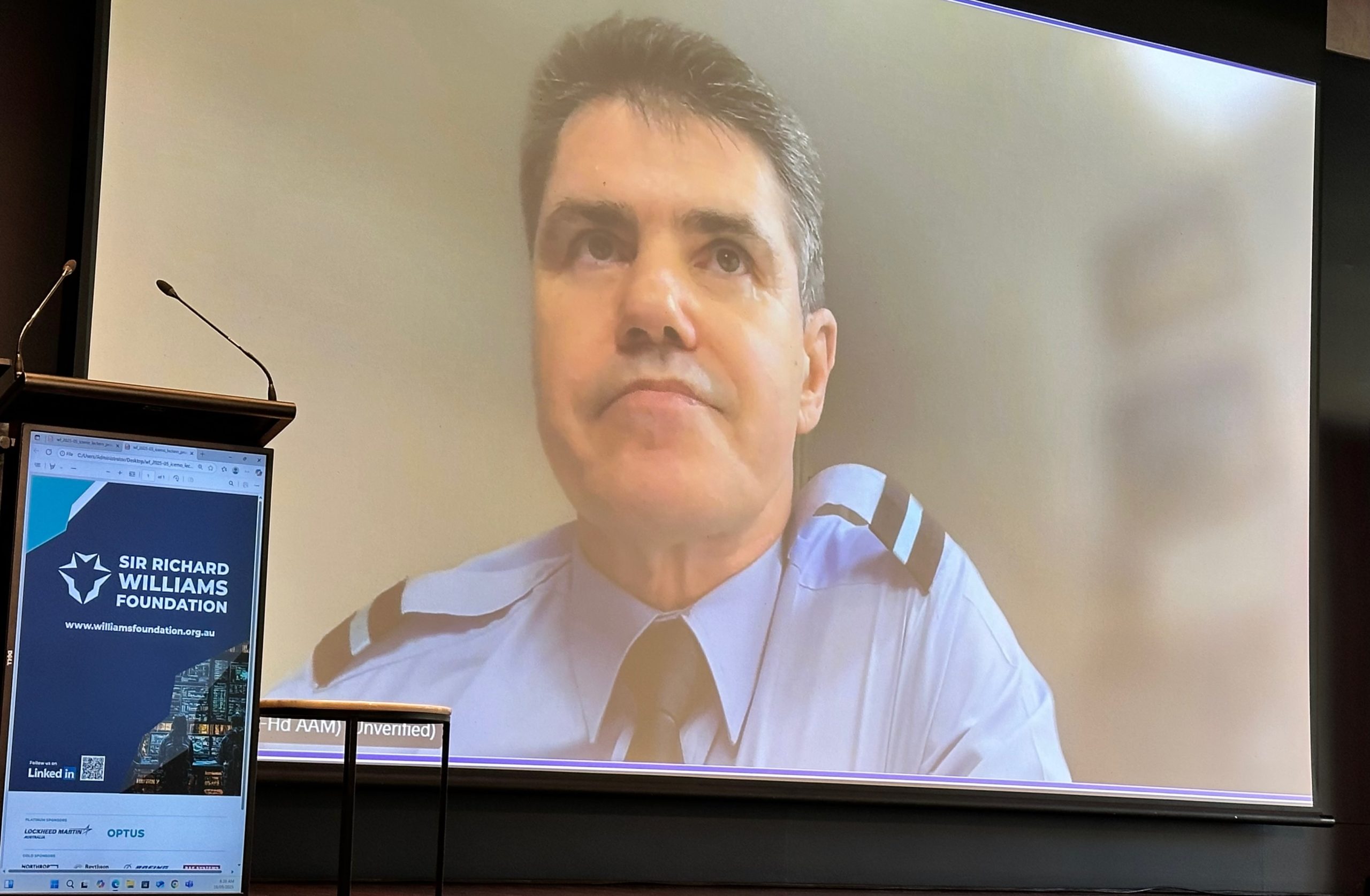By Robbin Laird
Modern warfare has reached an inflection point. As technology accelerates and battlespaces become increasingly complex, military aviation faces a fundamental truth: the next generation of military superiority will belong not to those with the most aircraft, but to those who make the smartest investments in their human capital. The recent insights from Tom Webster of Textron Aviation Defense illuminate this reality with striking clarity — the future belongs to forces that can produce “war winners, not war fighters.”
This distinction is more than semantic. It represents a paradigm shift from training pilots who can execute predetermined missions to developing strategic quarterbacks flying incredibly complex aircraft capable of synthesizing information, making autonomous decisions, and orchestrating distributed effects across vast battlespaces. As Webster emphasizes, “You don’t get any rewards for being the second-best Air Force,” and achieving that superiority requires fundamentally reimagining how we develop aviators.
The transformation underway in naval aviation training reflects this imperative. By moving beyond traditional stick-and-rudder skills toward mission system mastery and cognitive agility, Naval Aviation – both the U.S. Navy and the USMC — is positioning itself to dominate not just today’s threats, but those that haven’t yet emerged. This evolution represents the ultimate smart investment in human capital. One that transforms promising pilots into strategic decision-makers capable of winning wars before they’re fought.
The Paradigm Shift: Training Strategic Quarterbacks
The new training paradigm represents a fundamental reconceptualization of what it means to be a military aviator. As Webster explains, modern pilots must evolve from being “nodes in a network” to becoming “quarterbacks” of distributed forces. As Webster underscored, this shift recognizes that in an F-35, a pilot might “become aware that some system has been activated that is very vulnerable to some cyber effect” and need to “communicate, whether it’s via link or voice, into the network so the effect can be applied.”
This quarterback mentality requires a completely different skill set than traditional flying. Pilots must master information processing, strategic thinking, and autonomous decision-making while maintaining the basic airmanship that keeps them alive. They must be prepared to coordinate effects across multiple domains, air, land, sea, space, and cyber, and make strategic decisions that could have theater-wide implications. In a way, says Webster, the evolving world of airpower is redefining what is meant when we say an aviator has, “air sense,” or an, “airman’s perspective.”
The training implications are profound. Instead of focusing solely on technical proficiency, the new paradigm emphasizes cognitive flexibility, information management, and strategic agility. Pilots learn to process vast amounts of data, synthesize information from multiple sources, and make rapid decisions under extreme pressure. They develop the “mental furniture,” as Webster calls it, to adapt to new technologies and evolving threats throughout their careers. To meet this training demand requires different toolsets than have been available in the past.
Integrated Training Ecosystems
The cornerstone of this transformation is what Webster terms the “integrated training system” or a seamless blend of live, virtual, and constructive (LVC) training environments that began to emerge around 2010. This represents a quantum leap beyond the traditional model where pilots alternated between aircraft and simulators in discrete, unconnected sessions.
In the integrated system, live flying, virtual simulation, and constructive scenarios are “knitted together” using data links to create comprehensive training environments that mirror the complexity of modern combat. A trainee in an aircraft and a trainee in a simulator might fly a mission together operating in a combined live and virtual battlespace with constructive or simulated adversaries and friendly forces.
This integration enables training scenarios that would be prohibitively expensive or dangerous in purely live environments. As student aviators progress through training, the can practice responding to electronic warfare, coordinating with distributed forces, and managing complex multi-domain operations in a safe, controlled setting that nonetheless provides the cognitive stress and decision-making challenges they’ll face in combat. These are tasks which traditionally would have been reserved for the most advanced training in operational aircraft during complex large force exercises.
Perhaps the most revolutionary aspect of the LVC approach is the constructive element or the ability to create artificial entities and scenarios that push pilots beyond what’s possible in traditional training. As Webster notes, this allows instructors to “give you a challenge, whether you’re in an airplane or a simulator, using data links and this constructive force generation that is excellent for learning the type of skills you need to have in a fourth or fifth generation operational airplane.”
Constructive training enables aviators to experience the full spectrum of modern warfare before they encounter it operationally. They can practice such tasks as coordinating with allied forces, responding to cyber attacks, managing contested electromagnetic environments, and operating in GPS-denied conditions. They can also do it in a building block type approach which can be tailored to each student’s learning style and learning pace, an approach impossible in the complex world of live large force training. This exposure builds the cognitive frameworks and decision-making patterns that will serve them throughout their careers.
The safety implications are equally significant. Pilots can practice complex emergencies, navigate electronic warfare and, “live fire,” scenarios, and experience multi-domain operations without the inherent risks of live training. This dramatically reduces training-related mishaps while simultaneously improving the quality and realism of the training experience.
Mission System Mastery
The shift from basic flying skills to mission system proficiency represents perhaps the most fundamental change in pilot training. While traditional airmanship remains important, it now serves as the foundation for much more complex cognitive tasks centered on information management and strategic decision-making.
Modern military aircraft, particularly fifth-generation platforms, are essentially flying information systems. The F-35, for instance, processes and displays vast quantities of data from multiple sensors, creating a comprehensive picture of the battlespace that extends far beyond what any pilot could perceive through traditional means. Mastering these systems requires pilots to develop new cognitive skills that go far beyond basic aircraft operation.
This mission system focus transforms pilots from aircraft operators into information managers and strategic decision-makers. They must learn to interpret sensor data, manage information flows, coordinate with networked forces, and make strategic decisions based on synthesized intelligence. As Webster emphasizes, this creates pilots who can serve as “quarterbacks” of distributed forces rather than simply skilled aviators.
The emphasis on mission systems reflects a broader cognitive revolution in combat aviation. Modern pilots must process information at unprecedented speeds, manage multiple data streams simultaneously, and make strategic decisions while maintaining basic flight safety. This requires a level of cognitive flexibility and information management capability that traditional training never addressed.
Webster describes the need for different cognitive progression as follows: “In basic pilot training in a turboprop, you teach me basic airmanship; tasks such as how to communicate with air traffic control, how to get from point A to B and takeoff/land an airplane, how to do aerobatic maneuvers, and how to fly formation with other airplanes. Then, in more advanced jet training, you teach me many of the same things at higher speed, I can get to the point where I can do these basics really, really, well, but those are likely not the only core skill sets that I need to excel in my F-35 training.”
Instead, modern pilots need to master the cognitive skills that enable them to operate in information-rich, contested environments. They must be comfortable processing data from multiple sources, coordinating with distributed forces, and making autonomous decisions that could have strategic implications. This represents a fundamental shift from mechanical skill to cognitive agility.
Pilots as Strategic Assets
The new training paradigm recognizes that modern pilots are strategic assets whose decisions can shape entire campaigns. In distributed maritime operations, a single pilot might identify a critical vulnerability, coordinate a multi-domain response, and execute effects that alter the strategic balance of a conflict. This level of responsibility requires preparation that goes far beyond traditional flight training.
Webster’s observation about F-35 operations in contested environments illustrates this perfectly: pilots operating “nowhere near each other” can provide “the same mutual support that I had in an F-16 when I was a mile and a half or two or three miles from each other.” This represents a fundamental change in how air power operates and requires pilots who can think differently about force employment and tactical coordination.
The training implications are significant. Pilots must learn to operate independently while maintaining connectivity with larger force structures. They must be prepared to make strategic decisions without traditional command oversight and coordinate effects across multiple domains. This requires developing judgment, strategic thinking, and decision-making capabilities that traditional training never emphasized.
Future-Proofing Through Adaptability
Perhaps most critically, the new training paradigm prepares pilots for threats and technologies that don’t yet exist. As Webster notes, the training system must be “future proof” with “an adaptable, open tool set” that can evolve with changing requirements. This means developing pilots who can master not just current systems, but the process of continuous adaptation itself.
This adaptability imperative is driven by the pace of technological change and the unpredictable nature of future threats. The pilot graduating today will likely encounter technologies, tactics, and threats throughout their career that are currently unimaginable. Traditional training, with its focus on specific skills and systems, cannot prepare them for this reality.
Instead, the new paradigm emphasizes meta-skills, learning how to learn, adapting to new systems, processing novel information, and making decisions in unprecedented situations. These cognitive capabilities provide the foundation for continuous adaptation throughout a pilot’s career, ensuring they remain effective as technology and tactics evolve.
The Human Capital Investment Imperative: Building War Winners
The transformation in pilot training reflects a broader shift from quantity-focused to quality-focused force development. As Webster emphasizes, the goal is not simply to produce more pilots, but to create “war winners” who can dominate any environment they encounter. This represents a fundamental reorientation of how military aviation thinks about human capital development.
The economic logic is compelling. Modern military aircraft represent massive investments. The F-35 program alone costs hundreds of billions of dollars. The pilot operating that aircraft, however, receives a relatively modest investment in training and development. Yet that pilot’s decisions and capabilities will determine whether the massive investment in hardware achieves its intended strategic effect.
By investing more heavily in pilot development, through advanced training systems, experienced instructors, and comprehensive curricula, military aviation can achieve dramatically better returns on its hardware investments. A pilot who can fully exploit an aircraft’s capabilities is worth far more than multiple pilots who can only operate at basic proficiency levels.
The Multiplier Effect of Experienced Instructors
One of the most critical elements of the new training paradigm is the integration of experienced fifth-generation pilots as instructors. As Webster notes, there are not a lot pilots with operational F-35 experience who are teaching at basic training level due to the demand for their knowledge and skillsets in other places. This scarcity makes their contribution extraordinarily valuable.
These experienced instructors bring something that no simulation or textbook can provide: authentic knowledge of what modern, “5th generation,” combat aviation actually requires. They can distinguish between academic understanding and operational reality, ensuring that training focuses on skills that matter in actual combat. Their presence transforms training from theoretical preparation to practical preparation for known realities.
The multiplier effect is significant. One experienced instructor can shape hundreds of students throughout their teaching career, transmitting hard-won operational knowledge that would otherwise take years to develop independently. This creates a compounding return on the investment in human capital that extends far beyond individual training cycles.
Resource Efficiency and Strategic Returns
The new training paradigm also delivers significant resource efficiencies that enhance its strategic value. By leveraging simulation and LVC training, the approach reduces reliance on expensive live flight hours while actually improving training quality. Pilots can practice complex scenarios repeatedly in safe environments, building proficiency that would be impossible to achieve through live training alone.
This efficiency enables more comprehensive training within existing resource constraints. Instead of limiting training to what can be accomplished safely and affordably in live aircraft, the integrated approach opens up the full spectrum of scenarios pilots might encounter operationally. The result is better-prepared pilots at lower cost—a combination that delivers exceptional strategic value.
The safety benefits compound these advantages. By enabling pilots to practice dangerous scenarios in simulated environments, the new approach reduces training-related accidents while improving operational readiness. This not only preserves valuable human resources but also maintains training tempo and morale.
Building Adaptive Capacity
One of the most forward-thinking aspects of the new training paradigm is its emphasis on open, adaptable architectures that can evolve with changing requirements. As Webster explains, the system provides inherent flexibility becoming like “a multi-tool that I bought years earlier that can still be relevant, that is easy and relatively affordable to adapt as training needs continue to grow and evolve.”
This adaptability is crucial in an era of rapid technological change. New aircraft, sensors, weapons, and tactics emerge continuously and some are revolutionary and not just evolutions, and training systems must be able to adapt to these developments quickly and efficiently. Traditional training systems, with their fixed curricula and rigid structures, cannot keep pace with this rate of change.
The open architecture approach solves this problem by building flexibility into the fundamental design of training systems. Instead of requiring wholesale replacement when new technologies emerge, the system can be updated incrementally, preserving previous investments while incorporating new capabilities. This approach dramatically reduces the cost and complexity of maintaining current training while enabling rapid adaptation to new requirements.
Perhaps most significantly, the new training paradigm actually enables faster deployment of new aircraft technologies by preparing pilots to master them more quickly. Traditional training required extensive retraining when new systems were introduced, creating delays between technology availability and operational capability.
The mission system focus of modern training changes this dynamic fundamentally. Pilots who master the cognitive skills of information processing, strategic decision-making, and system integration can adapt to new platforms much more quickly than those trained only in specific aircraft operations. They possess the mental frameworks and cognitive capabilities needed to understand and exploit new technologies rapidly.
This capability has profound strategic implications. Military advantages are often temporary. Early adopters gain significant benefits, but these erode as adversaries develop countermeasures or acquire similar capabilities. Training systems that enable rapid mastery of new technologies help maintain and extend these temporary advantages, creating sustained competitive benefits.
Decision Superiority in Contested Environments
The ultimate test of any training paradigm is its impact on operational effectiveness, and the new approach delivers profound advantages in the most demanding scenarios. Pilots trained as strategic quarterbacks with mission system mastery possess what can only be described as decision superiority or the ability to observe, orient, decide, and act faster than adversaries in complex, contested environments.
This advantage manifests in multiple ways. First, pilots can process and synthesize information more quickly, gaining situational awareness that enables proactive rather than reactive decision-making. Second, they can coordinate distributed effects more effectively, leveraging assets across multiple domains to achieve objectives that would be impossible through traditional, stove-piped approaches. Third, they can adapt to unexpected developments more rapidly, maintaining initiative even when initial plans become obsolete.
These capabilities are particularly crucial in contested environments where traditional command and control structures may be degraded or disrupted. Pilots who can operate autonomously while maintaining strategic coherence provide commanders with flexible, resilient capabilities that can adapt to changing circumstances without constant oversight.
Distributed Lethality and Multi-Domain Operations
The training transformation directly enables the distributed maritime operations that define modern naval warfare. By emphasizing mission system mastery and networked information management, the new paradigm prepares pilots to coordinate effects across widely dispersed forces which is a capability that’s essential for survival and success in contested maritime environments.
This distributed approach multiplies combat effectiveness by enabling smaller, dispersed forces to achieve effects previously requiring large, concentrated formations. Pilots who can coordinate with distributed assets, integrate information from multiple sources, and execute complex, multi-domain operations provide commanders with dramatically enhanced operational flexibility.
The training system’s emphasis on team and joint integration further amplifies these advantages. Pilots who train in networked environments develop natural habits of collaboration and coordination that translate directly to operational effectiveness. They understand how to leverage allied capabilities, integrate with joint forces, and operate seamlessly in coalition environments.
Preparing for Future Warfare
Perhaps most importantly, the new training paradigm prepares pilots for warfare scenarios that haven’t yet emerged. By emphasizing adaptability, strategic thinking, and continuous learning, the approach creates pilots who can master new technologies, tactics, and threats as they appear.
This future-readiness is crucial in an era of rapid change and strategic competition. Adversaries are continuously developing new capabilities and tactics, and the side that can adapt most quickly gains decisive advantages. Training systems that emphasize adaptability and continuous learning provide the foundation for maintaining superiority in this dynamic environment.
The integration of artificial intelligence, unmanned systems, and other emerging technologies will require pilots who can understand, integrate, and exploit these capabilities effectively. The cognitive skills emphasized in modern training, information processing, strategic thinking, and adaptive decision-making, provide the foundation for mastering these future technologies as they become available.
Conclusion: The Strategic Imperative of Human Capital Excellence
The transformation of naval aviation training represents more than an educational evolution. It embodies a strategic recognition that human capital excellence is the ultimate determinant of military effectiveness. As Tom Webster’s insights make clear, the choice facing military aviation is stark: invest in developing war winners or accept the consequences of fielding merely competent war fighters.
The evidence is overwhelming that traditional training paradigms, however well-intentioned, cannot prepare pilots for the cognitive demands and strategic responsibilities of modern warfare. The information-rich, multi-domain, rapidly evolving nature of contemporary conflict requires aviators who can think strategically, adapt continuously, and coordinate effects across vast battlespaces. These capabilities cannot be developed through traditional stick-and-rudder training alone.
The integrated training ecosystem emerging from this recognition with its emphasis on mission system mastery, LVC integration, and strategic thinking represents the smartest possible investment in human capital. It produces pilots who can fully exploit the massive investments in modern aircraft while providing the adaptability needed to master future technologies and threats.
The strategic implications extend far beyond individual pilot development. Nations that embrace this training transformation will possess air forces capable of winning conflicts before they escalate, deterring aggression through demonstrated superiority, and adapting rapidly to emerging threats. Those that cling to traditional approaches will find themselves outmatched by adversaries who have made the intellectual and financial investment in human capital excellence.
The choice is clear: invest in developing war winners through transformative training or accept the strategic consequences of maintaining outdated approaches. For naval aviation, embracing this transformation isn’t just an opportunity but it’s an imperative for maintaining the superiority that has defined American air power for generations.
As Webster concludes: “At the end of the day, you want to win the war before it’s fought.” The new training paradigm provides the tools to do exactly that, creating aviators who don’t just operate aircraft but dominate the cognitive and strategic dimensions of modern warfare. The investment in such human capital excellence represents the ultimate strategic advantage, one that compounds over time and provides the foundation for sustained military superiority in an uncertain world.
The future belongs to those who recognize that in an age of technological revolution, the most sophisticated aircraft are only as effective as the pilots who operate them. By transforming training to develop strategic quarterbacks rather than mere aviators, naval aviation positions itself not just to meet future challenges, but to define the very dynamically changing nature of air power.





